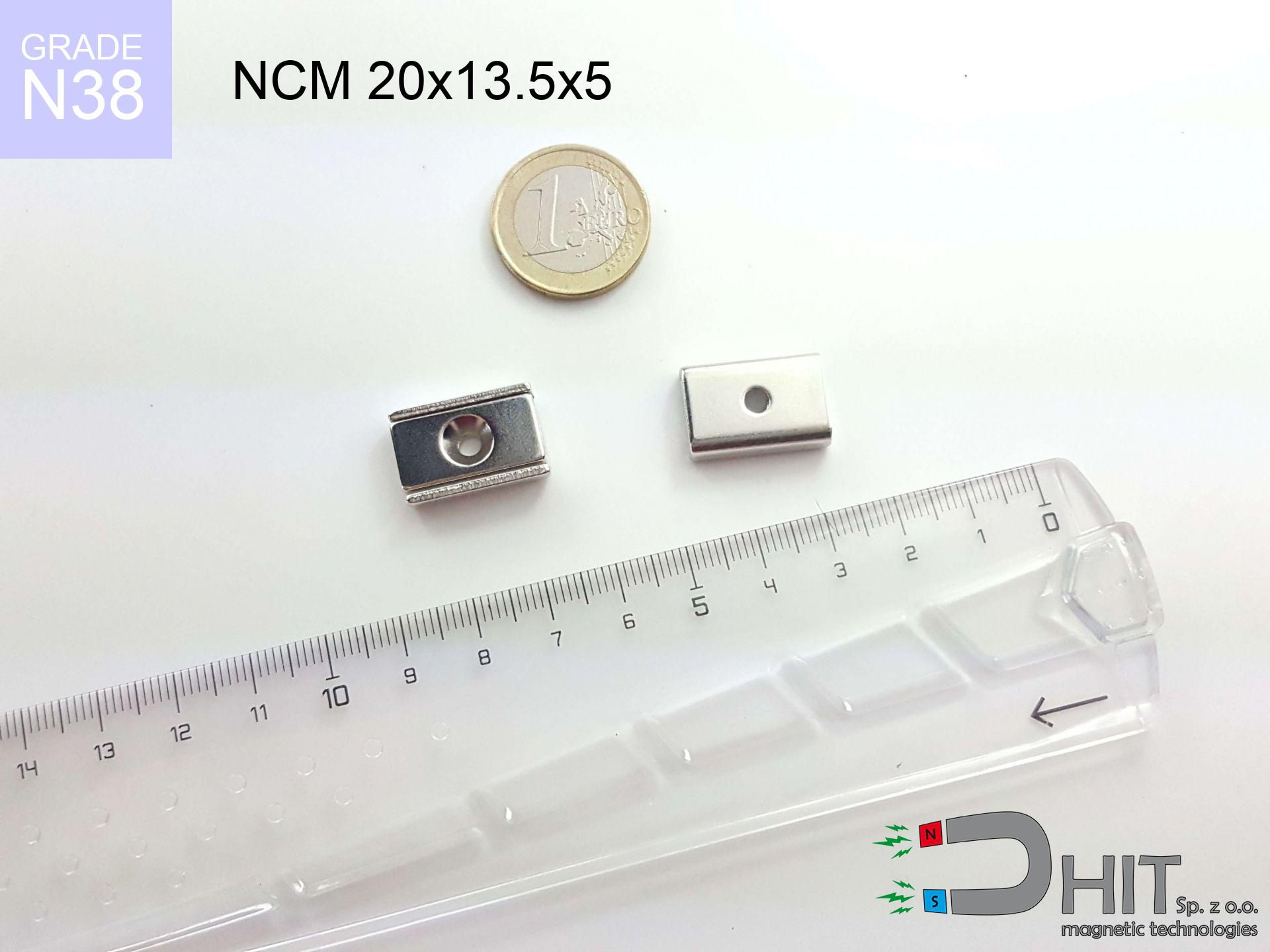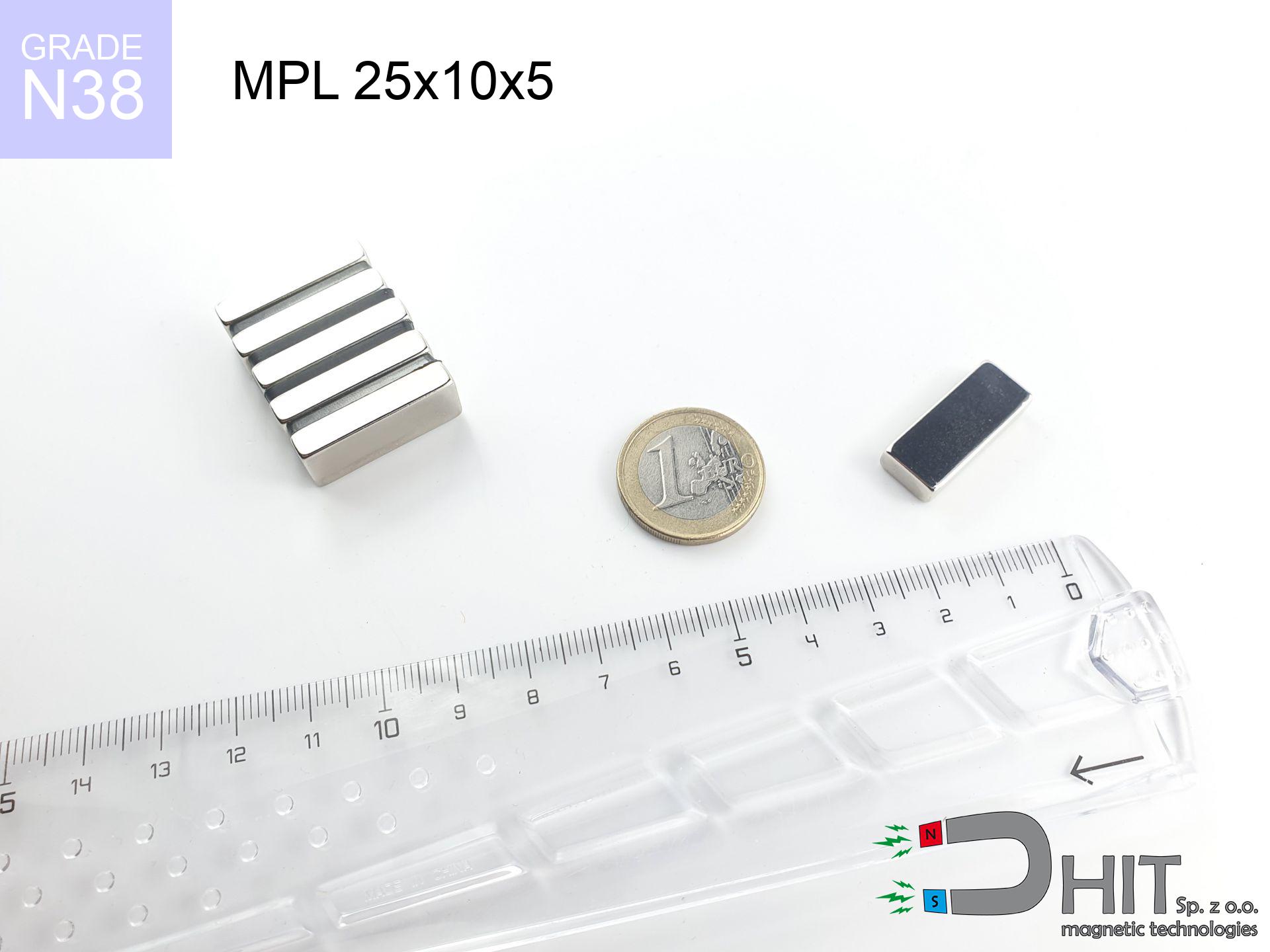UMGGW 66x8.5 [M8] GW / N38 - magnetic holder rubber internal thread
magnetic holder rubber internal thread
Catalog no 160308
GTIN/EAN: 5906301813668
Diameter Ø
66 mm [±1 mm]
Height
8.5 mm [±1 mm]
Weight
100 g
Load capacity
18.40 kg / 180.44 N
23.37 ZŁ with VAT / pcs + price for transport
19.00 ZŁ net + 23% VAT / pcs
bulk discounts:
Need more?
Pick up the phone and ask
+48 888 99 98 98
alternatively let us know using
contact form
through our site.
Lifting power as well as shape of a magnet can be estimated on our
magnetic calculator.
Orders submitted before 14:00 will be dispatched today!
Technical of the product - UMGGW 66x8.5 [M8] GW / N38 - magnetic holder rubber internal thread
Specification / characteristics - UMGGW 66x8.5 [M8] GW / N38 - magnetic holder rubber internal thread
| properties | values |
|---|---|
| Cat. no. | 160308 |
| GTIN/EAN | 5906301813668 |
| Production/Distribution | Dhit sp. z o.o. |
| Country of origin | Poland / China / Germany |
| Customs code | 85059029 |
| Diameter Ø | 66 mm [±1 mm] |
| Height | 8.5 mm [±1 mm] |
| Weight | 100 g |
| Load capacity ~ ? | 18.40 kg / 180.44 N |
| Manufacturing Tolerance | ±1 mm |
Magnetic properties of material N38
| properties | values | units |
|---|---|---|
| remenance Br [min. - max.] ? | 12.2-12.6 | kGs |
| remenance Br [min. - max.] ? | 1220-1260 | mT |
| coercivity bHc ? | 10.8-11.5 | kOe |
| coercivity bHc ? | 860-915 | kA/m |
| actual internal force iHc | ≥ 12 | kOe |
| actual internal force iHc | ≥ 955 | kA/m |
| energy density [min. - max.] ? | 36-38 | BH max MGOe |
| energy density [min. - max.] ? | 287-303 | BH max KJ/m |
| max. temperature ? | ≤ 80 | °C |
Physical properties of sintered neodymium magnets Nd2Fe14B at 20°C
| properties | values | units |
|---|---|---|
| Vickers hardness | ≥550 | Hv |
| Density | ≥7.4 | g/cm3 |
| Curie Temperature TC | 312 - 380 | °C |
| Curie Temperature TF | 593 - 716 | °F |
| Specific resistance | 150 | μΩ⋅cm |
| Bending strength | 250 | MPa |
| Compressive strength | 1000~1100 | MPa |
| Thermal expansion parallel (∥) to orientation (M) | (3-4) x 10-6 | °C-1 |
| Thermal expansion perpendicular (⊥) to orientation (M) | -(1-3) x 10-6 | °C-1 |
| Young's modulus | 1.7 x 104 | kg/mm² |
Elemental analysis
| iron (Fe) | 64% – 68% |
| neodymium (Nd) | 29% – 32% |
| boron (B) | 1.1% – 1.2% |
| dysprosium (Dy) | 0.5% – 2.0% |
| coating (Ni-Cu-Ni) | < 0.05% |
Sustainability
| recyclability (EoL) | 100% |
| recycled raw materials | ~10% (pre-cons) |
| carbon footprint | low / zredukowany |
| waste code (EWC) | 16 02 16 |
View more products
Strengths as well as weaknesses of neodymium magnets.
Benefits
- They do not lose strength, even after around 10 years – the decrease in power is only ~1% (based on measurements),
- Magnets effectively protect themselves against loss of magnetization caused by foreign field sources,
- The use of an aesthetic layer of noble metals (nickel, gold, silver) causes the element to look better,
- The surface of neodymium magnets generates a powerful magnetic field – this is one of their assets,
- Made from properly selected components, these magnets show impressive resistance to high heat, enabling them to function (depending on their shape) at temperatures up to 230°C and above...
- Possibility of custom machining as well as optimizing to precise applications,
- Versatile presence in innovative solutions – they are used in magnetic memories, electric drive systems, medical devices, as well as multitasking production systems.
- Compactness – despite small sizes they generate large force, making them ideal for precision applications
Cons
- They are prone to damage upon heavy impacts. To avoid cracks, it is worth protecting magnets in a protective case. Such protection not only protects the magnet but also increases its resistance to damage
- When exposed to high temperature, neodymium magnets suffer a drop in power. Often, when the temperature exceeds 80°C, their power decreases (depending on the size and shape of the magnet). For those who need magnets for extreme conditions, we offer [AH] versions withstanding up to 230°C
- Due to the susceptibility of magnets to corrosion in a humid environment, we suggest using waterproof magnets made of rubber, plastic or other material immune to moisture, when using outdoors
- Due to limitations in producing threads and complex shapes in magnets, we propose using casing - magnetic holder.
- Possible danger related to microscopic parts of magnets can be dangerous, in case of ingestion, which is particularly important in the context of child safety. Additionally, small elements of these devices can disrupt the diagnostic process medical in case of swallowing.
- Due to expensive raw materials, their price is relatively high,
Holding force characteristics
Best holding force of the magnet in ideal parameters – what it depends on?
- on a plate made of mild steel, perfectly concentrating the magnetic field
- possessing a massiveness of at least 10 mm to avoid saturation
- with a surface cleaned and smooth
- under conditions of ideal adhesion (surface-to-surface)
- during pulling in a direction vertical to the mounting surface
- at ambient temperature room level
What influences lifting capacity in practice
- Gap between surfaces – even a fraction of a millimeter of distance (caused e.g. by veneer or unevenness) significantly weakens the pulling force, often by half at just 0.5 mm.
- Force direction – declared lifting capacity refers to pulling vertically. When applying parallel force, the magnet exhibits significantly lower power (often approx. 20-30% of maximum force).
- Element thickness – to utilize 100% power, the steel must be sufficiently thick. Thin sheet restricts the attraction force (the magnet "punches through" it).
- Chemical composition of the base – mild steel attracts best. Alloy admixtures reduce magnetic properties and holding force.
- Base smoothness – the smoother and more polished the surface, the larger the contact zone and higher the lifting capacity. Roughness creates an air distance.
- Thermal conditions – NdFeB sinters have a sensitivity to temperature. At higher temperatures they are weaker, and at low temperatures gain strength (up to a certain limit).
Holding force was tested on the plate surface of 20 mm thickness, when a perpendicular force was applied, whereas under attempts to slide the magnet the holding force is lower. In addition, even a minimal clearance between the magnet and the plate lowers the lifting capacity.
Safety rules for work with NdFeB magnets
Warning for heart patients
Warning for patients: Strong magnetic fields disrupt medical devices. Keep at least 30 cm distance or request help to work with the magnets.
Safe operation
Handle magnets consciously. Their huge power can surprise even experienced users. Plan your moves and do not underestimate their force.
This is not a toy
Absolutely store magnets out of reach of children. Ingestion danger is high, and the effects of magnets clamping inside the body are fatal.
Sensitization to coating
A percentage of the population experience a hypersensitivity to Ni, which is the standard coating for neodymium magnets. Frequent touching can result in dermatitis. We recommend wear safety gloves.
Material brittleness
Despite the nickel coating, neodymium is delicate and not impact-resistant. Do not hit, as the magnet may crumble into sharp, dangerous pieces.
Machining danger
Combustion risk: Neodymium dust is highly flammable. Avoid machining magnets without safety gear as this may cause fire.
Permanent damage
Watch the temperature. Exposing the magnet above 80 degrees Celsius will destroy its properties and pulling force.
Impact on smartphones
A strong magnetic field negatively affects the functioning of compasses in smartphones and navigation systems. Keep magnets near a device to avoid breaking the sensors.
Electronic hazard
Intense magnetic fields can destroy records on payment cards, hard drives, and storage devices. Maintain a gap of at least 10 cm.
Finger safety
Danger of trauma: The attraction force is so immense that it can cause hematomas, crushing, and even bone fractures. Protective gloves are recommended.

![Rubber coated magnetic holder UMGGW 66x8.5 [M8] GW / N38 Rubber coated magnetic holder UMGGW 66x8.5 [M8] GW / N38](https://cdn3.dhit.pl/graphics/banners/magnet.webp)
![UMGGW 66x8.5 [M8] GW / N38 - magnetic holder rubber internal thread](https://cdn3.dhit.pl/graphics/products/umg-66x8.5-m6-gw-wud.jpg)
![UMGZ 48x24x11.5 [M8] GZ / N38 - magnetic holder external thread UMGZ 48x24x11.5 [M8] GZ / N38 - magnetic holder external thread](https://cdn3.dhit.pl/graphics/products/umgw-48x24x11.5-m8-gz-bit.jpg)




